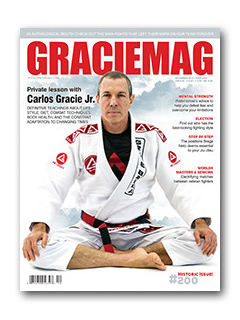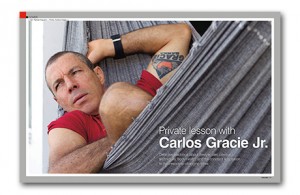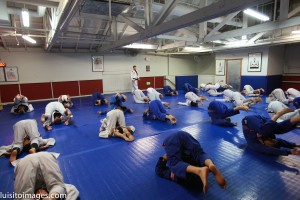5 Tips for BJJ Over 35
Master Carlos Gracie Jr. is an example to all over 35 practitioners of bjj on how to live the jiu-jitsu lifestyle. Nearing 60 years of age, “Carlinhos” as his friends call him, continues to provide an example of health and fitness.
See his videos of climbing the sand dunes in Florianopolis, Brazil (the leg endurance he builds helps his guard).
Gracie Mag featured an interview where Carlinhos is preparing healthy foods that are essential to both fuel and rebuild the body after the demands of training.
A private lesson in Jiu-Jitsu, health and nutrition with Carlos Gracie Jr.
 Master Carlos Gracie Jr. demonstrates by example how it is possible to enjoy jiu-jitsu and vibrant health well after many others have ceased their other physical pursuits.
Master Carlos Gracie Jr. demonstrates by example how it is possible to enjoy jiu-jitsu and vibrant health well after many others have ceased their other physical pursuits.
After a bjj competitor is no longer focused on hard training for competitions, they will look to continue to get on the mat several times a week to enjoy the sport and art.
Those who have passed their 35th birthday (or more!) will recognize that their bodies have changed since their physical peak in their 20s.
Here are 4 tips for the over-35 practitioners of the art suave:
1) Pay attention to nutrition
After adequate sleep, nutrition is the biggest factor in your ability to continue an active bjj lifestyle.
For most of us, our metabolism slows after 35 and we can no longer just eat what tastes good if we hope to maintain our bodyweight.
We have all seen former athletes who continue eating the same way after their competitive careers end, and balloon up in weight.
A greater emphasis on a natural diet based on fresh fruits and vegetables is the best nutritional strategy to provide the nutrients you need for optimal recovery and maintenance of your bodyweight.
See related article.
 2) Attention to recovery
2) Attention to recovery
This area is perhaps the most difficult to manage for the older bjj’er.
One area where one’s diminished ability to recover is most noticeable is when a minor injury occurs. A mildly sprained ankle which bothered you for a week at age 22 is now a malingering ache for over a month at 15 years older.
You want to train enough to stay in your best condition, but be careful not to cross the line into over-training and a greater risk of injury.
When you calculate how many times you can train per week, you must also factor in your other fitness activities. Any running, striking training, and weight training must be considered part of your overall training load in a given week.
If you feel irritable, run down and / or plagued with small aches and pains, these are signs that you will need to adjust your training frequency and intensity.
Quality and quantity of your sleep must not be underestimated when trying to maximize your recovery.
3) Pick your rolls
 Different practitioners have different goals in bjj. The 22-year-old competitor preparing for the Pan Ams has different training goals (and needs) than the 3 x a week family man.
Different practitioners have different goals in bjj. The 22-year-old competitor preparing for the Pan Ams has different training goals (and needs) than the 3 x a week family man.
It is certainly possible for them to have productive training together, but the intensity of sparring of the competitor also carries a higher risk for injury.
The older, more recreational student must ration their rolls with the young guns.
There are members in every academy who are known for their…err….physical or ballistic rolling style. Most people in the academy know who those that fit the previous description are.
My advice is to pass on those rolls with students who lack control over their movements and whose reckless movements are more likely to cause an injury that will keep you off of the mat.
4) Basic positions vs. relying on flexibility
 In a Gracie Mag interview, Master Carlos Gracie Jr. said that he didn’t understand the fascination with some of the newer guards that require acrobatic movements and inverting the body and going upside down (ex. Tornado guard and berimbolo).
In a Gracie Mag interview, Master Carlos Gracie Jr. said that he didn’t understand the fascination with some of the newer guards that require acrobatic movements and inverting the body and going upside down (ex. Tornado guard and berimbolo).
He feels that the spine loses its flexibility as we age and these inverted positions place the spine and neck at risk.
It is not difficult to see how playing upside down guards places your cervical and lumbar spine in vulnerable positions. One accident and your spine can be stressed beyond its limits and you are off the mat.
For the longer term consideration of continued training, Carlinhos advocates emphasizing those same fundamental positions that Helio Gracie was using when he trained at 90 years of age.
5) Adequately warm up
 How many times have we overheard the following conversation:
How many times have we overheard the following conversation:
“I was running late for class and missed my usual warm-up. I jumped into rolling and I was going for this move when I felt a pop and sudden pain.”
They instantly realize their mistake, and now have weeks and possibly months to contemplate the consequences of failing to adequately prepare the body for strenuous exercise.
The next time you are tempted to jump right into the fire, pause and take the extra couple of minutes to warm the muscles and joints up as a preventive measure.
Gracie Barra Black belt based in Taipei, Taiwan
Twitter: @MarkMullenBJJ

Comments are closed.